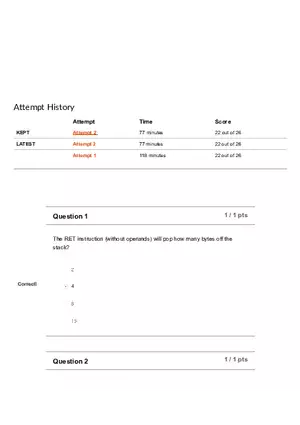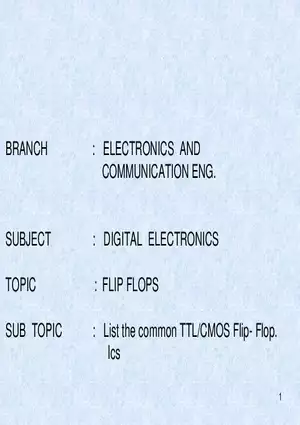Answer Key
6.035 Practice Quiz 1
-
University:
Massachusetts Institute of Technology -
Course:
6.035 | Computer Language Engineering Academic year:
2022
-
Views:
278
Pages:
4
Author:
cocolonq92ji
Related Documents
- Learning Perl Through Examples Part 4
- Introduction to Matlab Parallel Computing Toolbox
- Action Recognition Using Log-Covariance Matrices of Silhouette and Optical-Flow (Practical Considerations)
- Introduction to Matlab Parallel Computing Toolbox Part 2
- UMASS-Amherst Network Vital Statistics
- Introduction to Matlab Chapter 2
- Introduction to Matlab Chapter 1
- FlashForge Inventor 3D Printer User Guide Pt 3
- Getting Started With SQLite
- How Photocopiers Work
- Legacy Wire EDM Tutorials 2
- How LCDs Work
- Micro Bits
- Intro to Python Part 2 Chapter 2
- PROC SQL Vs. Data Step Processing Ch 2
- FlashForge Inventor 3D Printer User Guide Pt 2
- GPU Computing with CUDA Introduction Part 3
- GPU Computing with CUDA - Memory Hierarchy
- PROC SQL Vs. Data Step Processing
- Legacy Wire EDM Tutorials 3
Report
Tell us what’s wrong with it:
Thanks, got it!
We will moderate it soon!
Report
Tell us what’s wrong with it:
Free up your schedule!
Our EduBirdie Experts Are Here for You 24/7! Just fill out a form and let us know how we can assist you.
Take 5 seconds to unlock
Enter your email below and get instant access to your document








